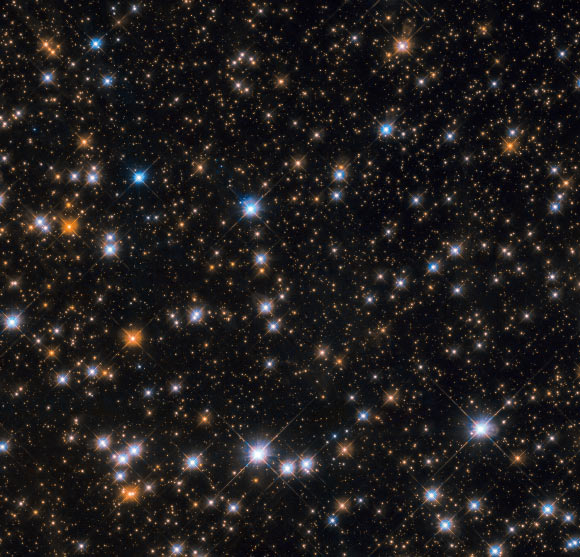The NASA/ESA Hubble Space Telescope has captured the brilliance of an open star cluster called Messier 11 (also known as M11 or NGC 6705).

This image of Messier 11 is made up of observations from Hubble’s Wide Field Camera 3 (WFC3) in the infrared and optical parts of the spectrum. Two filters were used to sample various wavelengths. The color results from assigning different hues to each monochromatic image associated with an individual filter. Image credit: NASA / ESA / Hubble / P. Dobbie et al.
Messier 11 is located approximately 6,120 light-years from Earth in the southern constellation Scutum and has an apparent magnitude of 6.3.
Of the 26 open clusters included in the Messier catalog, this cluster is the most distant that can be seen with the naked eye.
Also known as the Wild Duck Cluster for the roughly V-shaped arrangement of its brightest stars, Messier 11 was discovered by the German astronomer Gottfried Kirch in 1681.
Messier 11 is one of the most densely populated open clusters known. Containing over 2,900 stars, it appears as a triangular patch of light through a pair of binoculars.
By investigating the brightest, hottest main sequence stars in the cluster astronomers estimate that it formed roughly 220 million years ago.
Open clusters tend to contain fewer and younger stars than their more compact globular cousins, and Messier 11 is no exception: at its center lie many blue stars, the hottest and youngest of the cluster’s few thousand stellar residents.
The lifespans of open clusters are also relatively short compared to those of globular ones.
Stars in open clusters are spread further apart and are thus not as strongly bound to each other by gravity, causing them to be more easily and quickly drawn away by stronger gravitational forces.
As a result Messier 11 is likely to disperse in a few million years as its members are ejected one by one, pulled away by other celestial objects in the vicinity.







